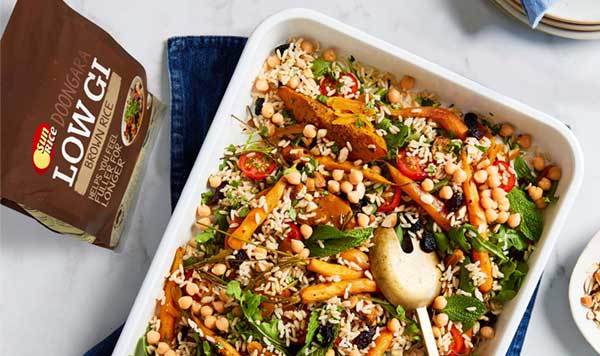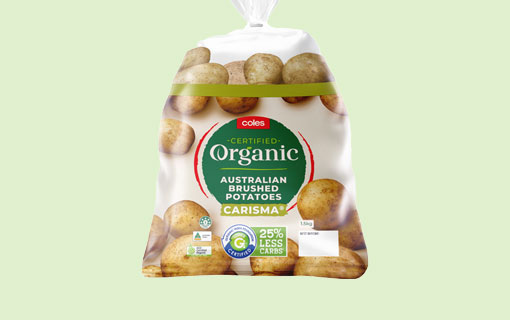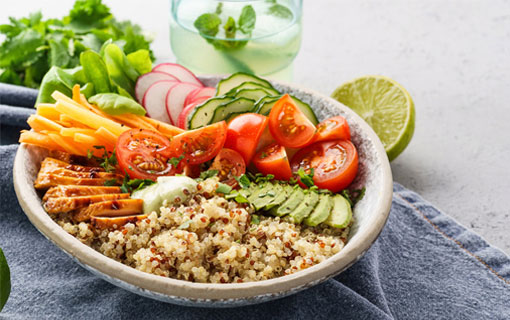GI and Pregnancy
Following a healthy low GI diet during pregnancy helps protect your child’s future health and improves health and wellbeing for lifelong benefits.

The facts at a glance
Making smart low GI choices during pregnancy helps your baby grow at a healthy rate and can reduce complications.
Eating for two is a myth. You only need 10% more energy during the second and third trimester, however, the need for certain nutrients, such as iron, increases significantly.
A low GI diet helps keep blood glucose levels steady, avoiding the peaks and crashes. This in turn can prevent babies from being born with excess body fat and reduces the risk of developing type 2 diabetes in later life.
ON THIS PAGE
PRINT, DOWNLOAD, SHARE
About a healthy pregnancy
Food choices during pregnancy can impact a child’s future health long after they have been born, so it’s vital to eat well during this time.
Studies have found that a mother’s diet during pregnancy can ‘program’ her child’s metabolism in both good and bad ways. A poor diet during pregnancy can predispose a child to developing obesity or type 2 diabetes when he or she is older. In contrast, a healthy low GI diet can help protect them.
Eating for two?
While being pregnant increases a woman’s nutritional needs, the amount of extra food needed is less than many people realise. Energy requirements during the first trimester remain the same as they were before pregnancy, and only increase by 10% in the second and third trimesters. However, the need for certain nutrients (such as iron and folate) increases significantly so it is more important than ever to make every mouthful count.
Gaining the right amount of weight during pregnancy is also important as too much weight gain will increase the risk of gestational diabetes and other pregnancy complications.
Gestational diabetes
Gestational diabetes (GDM) is a form of diabetes that occurs during pregnancy and usually disappears after the birth but may reoccur in the next pregnancy. GDM occurs when the hormones made by the placenta during pregnancy stops the body’s own insulin from working properly, causing blood glucose levels to rise. Glucose is the main fuel for a baby’s development so if levels are too high, a baby may grow too fast, be born with excess body fat and be at risk of developing type 2 diabetes later on in life.
How a low GI lifestyle can help
A healthy low GI eating plan is one of the safest and most effective ways of ensuring the baby grows at a healthy rate. It does not require cutting out any major food groups, so benefits both mother and child. A low GI diet during pregnancy can:
- Prevent excessive weight gain
- Reduce the mother’s chance of developing gestational diabetes
- Lessen the likelihood of birth defects, a complicated delivery and lower infant birth weights
- Reduce a child’s future risk of obesity, type 2 diabetes and chronic disease
Low GI lifestyle tips
- Choose nutrient-dense foods packed with vitamins and minerals
- Avoid overloading on kilojoules
- Manage blood glucose levels with the right balance of protein and carbohydrates
- Focus on low GI carbohydrates
- Choose dense wholegrain bread
- Choose rolled oats or natural muesli instead of processed breakfast cereals
- Choose basmati or doongara varieties of rice
- Include more legumes such as chickpeas, lentils and kidney beans
- Snack on fruit and yoghurt
- Continue to be physically active in pregnancy
- Be mindful of weight gain. The amount of weight an expectant mother should gain will depend on her weight prior to conception
If you’re diagnosed with gestational diabetes or are at risk of developing gestational diabetes, ask your doctor about working with a dietitian who specialises in nutrition during pregnancy. A dietitian can help plan your meals devise a low GI eating plan that will keep you and baby healthy, with foods you actually like.
Research and further reading
- Short-term effects of a hypocaloric diet with low glycemic index and low glycemic load on body adiposity, metabolic variables, ghrelin, leptin, and pregnancy rate in overweight and obese infertile women: a randomized controlled trial
- Dietary intervention in patients with gestational diabetes mellitus: a systematic review and meta-analysis of randomized clinical trials on maternal and newborn outcomes
- Maternal dietary glycemic index and glycemic load in early pregnancy are associated with offspring adiposity in childhood: the Southampton women’s survey
- The influence of a low glycemic index dietary intervention on maternal dietary intake, glycemic index and gestational weight gain during pregnancy: a randomized controlled trial
- Low glycaemic index diets improve glucose tolerance and body weight in women with previous history of gestational diabetes: a six months randomized trial
- Effect of a low glycaemic index diet during pregnancy on maternal and cord blood metabolomic profiles: results from the ROLO randomized controlled trial
- Randomized controlled trial investigating the effects of a low–glycemic index diet on pregnancy outcomes in women at high risk of gestational diabetes mellitus: the GI baby 3 study
Download resources
Recommended for you

RECIPES

GI CERTIFIED PRODUCTS
DIABETES

LOW GI LIVING


A low GI diet focuses on the quality of carbohydrates you eat. Good carbohydrates (or low GI carbohydrates) are more slowly digested helping keep your blood sugars stable, whereas bad carbohydrates cause your blood glucose levels to peak and crash. Want to know which carbohydrates are best for you? Try our swap it tool!




